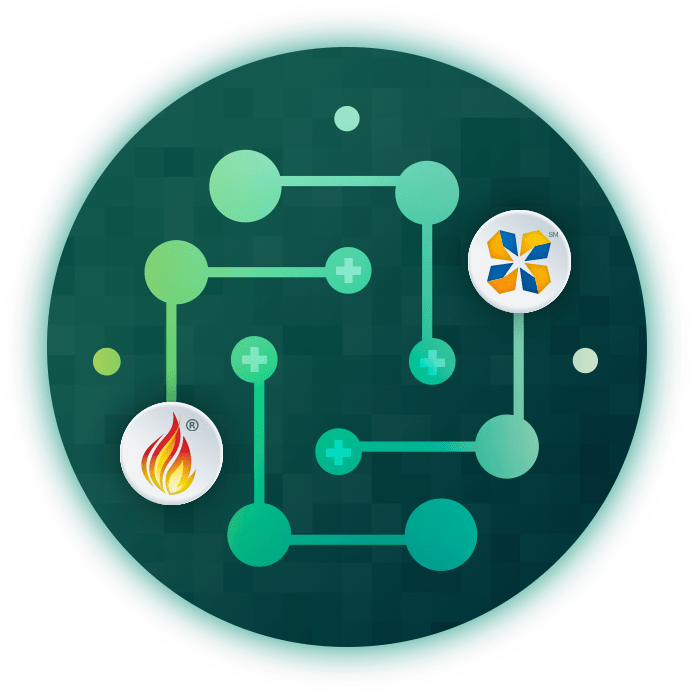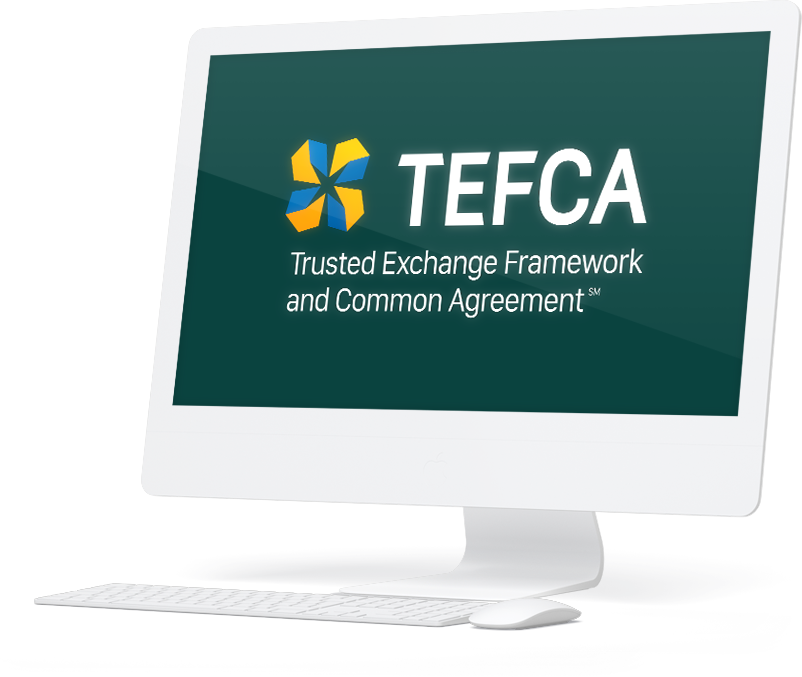TEFCA AND FHIR
Learn how FHIR works within TEFCA
Facilitated Health Level 7 Fast Healthcare Interoperability Resources (HL7 FHIR®) is designed to allow organizations to conduct transactions directly with other participants in TEFCATM exchange without having a prior connection in place.

FHIR® Roadmap for TEFCA Exchange
Version 2 of the FHIR® Roadmap for TEFCA Exchange (the FHIR Roadmap) aligns with the market needs and technical capabilities of organizations participating in our framework.

HL7® FHIR® – Fast Healthcare Interoperability Resources
HL7® FHIR®[1] is a next-generation interoperability standard created by the standards development organization Health Level 7 (HL7®). FHIR is designed to enable health data, including clinical and administrative data, to be quickly and efficiently exchanged at the data element level. This allows actors to ask for and receive the specific data they need, rather than receiving a summary of care document that may contain more information than necessary.
In 2012, the health IT community asked: What would health information exchange look like if it started now, using modern approaches? This question factored in the rapidly growing amount of health data and the rise of the “app” economy on smartphones.[2]
Since then, FHIR has become the most actively developed standard for implementation guides and modern use cases in health care. However, scaling use of FHIR has been challenging due to issues such as lack of a single directory that includes the FHIR addresses (endpoints) and mechanisms to verify who is asking for information (authentication).
HL7 FHIR is the latest addition to TEFCA Exchange
The draft Common Agreement (CA) v2.0 and draft Qualified Health Information Network® (QHINTM) Technical Framework (QTF) V2.0 enable use of FHIR Release 4 for all use cases. Updated implementation Standard Operating Procedures (SOPs) will also specify how to use FHIR for specific uses.
Once these documents are finalized, Participants and Subparticipants will be able to use Facilitated FHIR to exchange data if they want to. Facilitated FHIR is designed to allow organizations to conduct transactions directly with other participants in TEFCA exchange without having a prior connection in place. It is facilitated by usage of the RCE® Directory Service for scalable endpoint discovery, the Common Agreement for consistent policy requirements, and the QTF and relevant SOPs for TEFCA-specific technical requirements.
While the initial discovery of where a patient’s data resides will be done through a query to their QHIN, TEFCA exchange can be done directly with FHIR-enabled organizations that have listed a FHIR endpoint in the RCE Directory Service. This will allow organizations with FHIR capabilities to do specific queries targeted to the data they need in support of the TEFCA use cases defined.

TEFCA FHIR Requirements
The draft QTF v2 describes three FHIR requirements: (1) security using the HL7 UDAP Security for Scalable Registration, Authentication, and Authorization Implementation Guide,[3] (2) FHIR Provenance,[4] and (3) use of the HL7 FHIR US Core Implementation Guide, v3.1.1 standard.[5] These three requirements create an environment of easier exchange under TEFCA by making security automation faster and using the United States Core Data for Interoperability (USCDI)[6] V1 as the default for all exchange.
While TEFCA Exchange will still have a baseline of required IHE transactions, the ability to also use FHIR allows for greater specificity of what is requested and retrieved. The draft QTF v2 supports, but does not require, the following FHIR Implementation Guides:
- HL7 Bulk Data Access IG v1.0.1, to allow for exchange of large amounts of patient data,
- IHE Mobile access to Health Documents (MHD) v4.2.0, to ease exchange of documents with IHE Document Sharing repositories,
- HL7 Da Vinci Payer Data Exchange v1.0.0, for exchange of patient data between Providers and Payers
As the FHIR standard and associated FHIR Implementation Guides evolve, TEFCA will update these and other requirements to ensure that TEFCA QHINs, Participants, and Subparticipants have the tools they need to support the best care possible.

Sources:
2 ONC Publication “What Is HL7® FHIR®” published at healthit.gov
3 Published at https://hl7.org/fhir/us/udap-security/
4 See https://hl7.org/fhir/R4/provenance.html for details
5 Published at https://hl7.org/fhir/us/core/STU3.1.1/index.html
6 See https://www.healthit.gov/isa/united-states-core-data-interoperability-uscdi
Looking for additional resources related to FHIR and TEFCA?
Visit RCE’s resource center to view all documents related to TEFCA and FHIR. Or visit the FHIR website for additional information and documentation.
